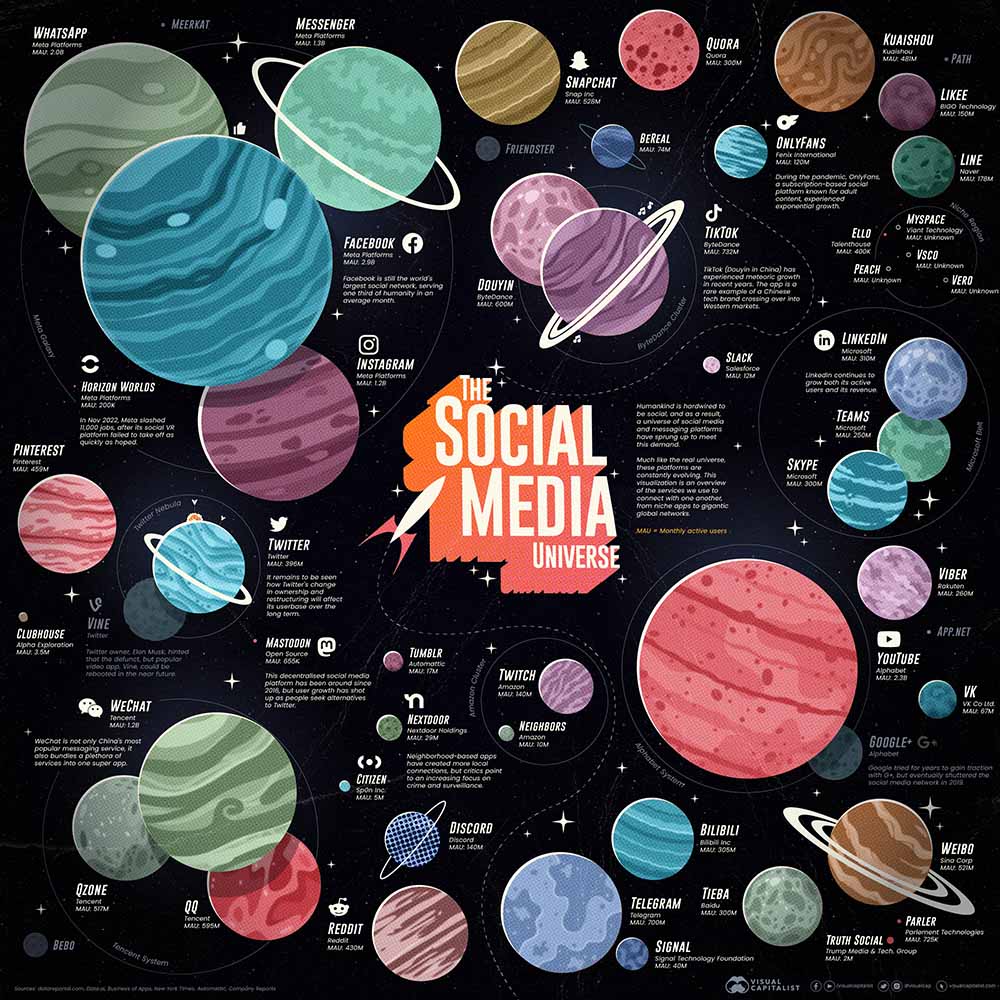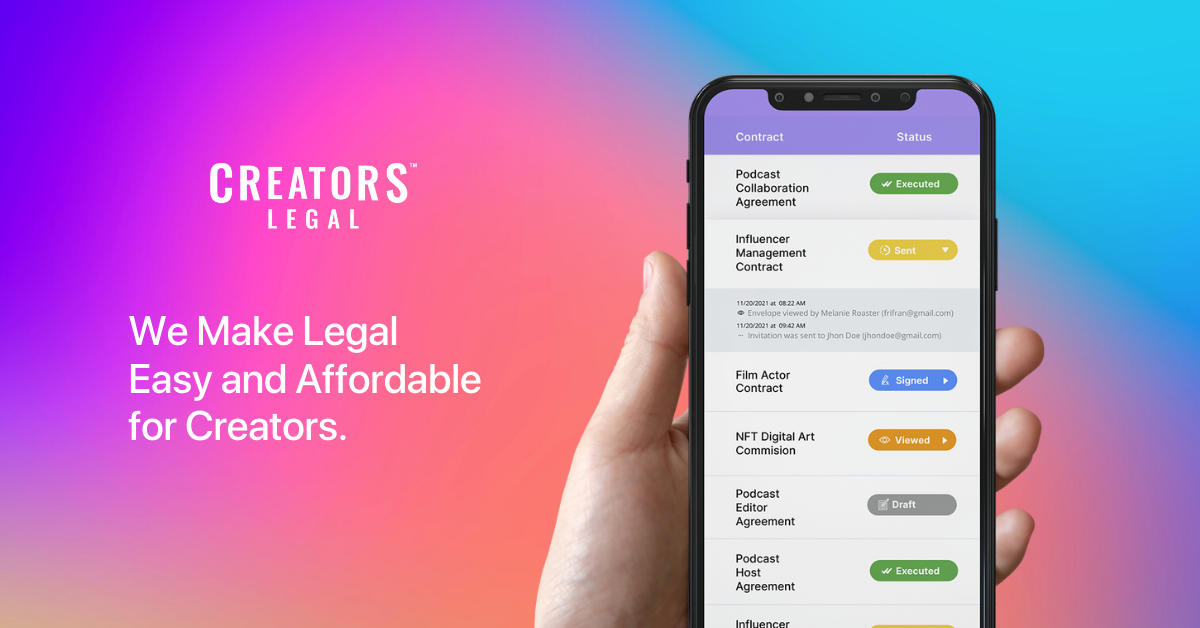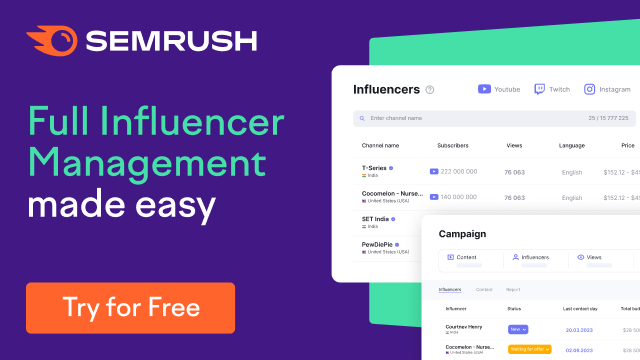Digital piracy continues to pose significant challenges to the over 300 million content creators active across numerous industries worldwide. Its economic impact is significant, and the stats are staggering. A 2016 report commissioned by the International Chambers of Commerce forecasted that by 2022 the economic impact of digital piracy in music, video, and software would exceed $800 billion. Digital piracy and the broader activities of counterfeiting and piracy cost nearly $4 trillion in total economic and social impact. This includes lost sales from illegally consumed content, lost jobs, and broader social costs. Content creators derive their value and income from the unique nature of daily content. Unfortunately, the scale and nature of digital piracy worldwide affects this income and livelihood. In this article, we explore digital piracy in the creator economy and suggest steps creators can take, such as OrangeDox, to share, track and protect their work.
The Creator Economy:
A recent report from Goldman Sachs pegs the creator economy at $250 billion in 2023, growing to nearly $500 billion in 2027. Key near-term growth drivers include influencer marketing and ad-revenue sharing models, particularly from short-form videos. The digital economy has experienced explosive growth, encompassing various activities. From music, movies, and TV shows to eBooks, software, and video games, digital content has become increasingly popular and accessible. The creator economy has thrived as individuals and businesses produce original content, leveraging digital platforms for distribution and monetization. These creators produce content disseminated to an estimated 4.76 billion social media consumers worldwide.

Source: Visual Capitalist
The Covid-19 pandemic and subsequent lockdowns resulted in an explosion of new content creators as industries laid off employees and brands and consumers moved a significant amount of their activities online. Post-pandemic, these engagement strategies remain in place. Many of these content creators were solopreneurs or small businesses pursuing a side hustle or engaging full-time. Activities by creators are an important part of the over $3 trillion digital consumer economy. Improvements in ICT infrastructure and higher broadband speed, particularly in developing markets, suggest robust times ahead.
Different Types of Content Creators:
Content creators come in all types encompassing diverse fields, including musicians, filmmakers, writers, software developers, designers, and more. These creators invest their time, expertise, and resources to produce valuable content, driving innovation and contributing to digital and creative economies. Some of the content creator roles include:
- Educator: A creator providing content for remote learning programs such as e-learning, distance learning, etc. Online learning can be synchronous (real-time) or asynchronous (convenience)
- Blogger: This creator produces content through a weblog (blog) to raise awareness on a particular subject matter or to support lead-generation activity for brands.
- Coach: These are individuals focused on supporting organizations or individuals to improve performance or achieve certain goals
- Author: Creators producing written content such as books, articles, plays, shows, etc.
- YouTuber: A creator producing videos and other content for YouTube
- Influencer: Influencers are creators developing content, usually on social media, to shape consumer perceptions and purchase behavior.
- Artist: Creators working in various mediums, e.g., music, painting, multimedia, fine arts, graphic and product design, etc.
- Software Developer: A creator responsible for designing, testing, and coding software applications.
For many of the creators, their online activities serve as their primary source of income. For example, close to 50% of all freelancers in the Philippines are exclusively content creators. Platforms such as Teachable and many others offer creators tools to develop useful content for mass consumption. Additionally, many of these platforms used by creators provide significant economic multiplier effects for local and regional economies. For example, YouTube’s creative ecosystem contributed over $35 billion to US GDP in 2022, supporting more than 390,000 full-time equivalent jobs in the US.
Types of Digital Piracy Affecting Content Creators
Daily, these various creators produce a vast amount of content. Key to creators realizing value for their work is the ability to produce content destined for external audiences. This content should be consumed through legitimate and authorized platforms. Online piracy manifests in various forms, jeopardizing the rights and revenues of content creators. Some common types of piracy include:
- Streaming and Downloading: Unauthorized streaming or downloading of copyrighted content, such as movies, TV shows, music albums, and software, is a major concern. Illicit streaming platforms and torrent websites facilitate the distribution of copyrighted material without permission. Illegal streaming accounts for an estimated 80% of online piracy. In markets like the Philippines, illegal streaming hurts the creator economy, with annual losses of $1 billion expected by 2027 due to digital piracy.
- Counterfeit Merchandise: Counterfeit merchandise, including clothing, accessories, and collectibles, infringes on intellectual property rights and undermines the legitimate revenue streams of creators and brands. Much of this fake merch can be found in local shops and markets or even sold on reputable e-commerce platforms such as Amazon, Lazada, or eBay. Estimates suggest that up to 40% of online purchases are fake. Major counterfeit items sold online include cosmetics, medications, supplements, and replacement parts.
- eBook Piracy: Pirated eBooks are readily available on file-sharing platforms, depriving authors and publishers of royalties. eBook piracy particularly affects the publishing industry, hampering the growth and sustainability of authors and publishers alike.
- Software and App Piracy: Unauthorized distribution or use of copyrighted software or applications is rampant worldwide. Cracked versions of software or apps are often shared on websites and forums, undermining the revenue potential of developers and software companies.
Statistics on Content Piracy:
The breadth and depth of digital is staggering. To provide a clearer picture of the scale and economic impact, consider the following statistics on content piracy:
Film and TV Piracy: According to Statistica, the film and television industry lost an estimated $51 billion in revenue in 2020 due to online piracy. In 2021, the most pirated TV show globally was WandaVision, according to TorrentFreak. Other pirated shows included The Witcher, Loki, Arcane, and The Wheel of Time.
Music Piracy: Streaming services such as Spotify, Apple Music, and Deezer now represent the largest source (67%) of revenues for record companies. The growth of music streaming services was expected to reduce online piracy through instant access and a better user experience. It has not. International Federation of the Phonographic Industry (IFPI) estimated that in 2020, 38% of internet users globally engaged in music piracy. According to a report by Muso, in 2021, there were over 182 billion visits to music piracy websites.
eBook Piracy: In 2018, e-book piracy cost US publishers over $300 million annually. In the UK, it is estimated that 17% of ebooks are consumed illegally. In Germany, e-book piracy remains rampant, with estimates suggesting that only 10% of e-books on digital readers were actually paid for. The other 90% were pirated.
Software Piracy: The Business Software Alliance (BSA) reported that 37% of all software remains unlicensed, with a commercial value of $47 billion. The top 5 markets worldwide for the use of pirated software include China (#1), Russia (#2), the United States (#3), India (#4), and Germany (#5). The presence of the United States and Germany in the top 5 suggests that despite robust surveillance and enforcement mechanisms, these markets are not immune.
OrangeDox Protection for Content Creators:
Presently, there is no shortage of solutions to support content creators. However, in many instances, these creators are solopreneurs or small organizations, both with limited resources and time to protect their content. At the same time, protections for creators are housed in many of the platforms, such as Teachbale, but other creators remain exposed. Retaining physical control over or protecting content becomes a challenge.
Orangedox is a cloud-based document management platform that can help creators of all sizes achieve the goal of secure and confidential content sharing through its web publishing feature. It integrates with Google Drive and also works with Dropbox. Presently it is not available with Microsoft Office. Some of the main advantages of Orangedox for content creators, particularly educators, coaches, corporate trainers, authors, and artists.
- Google Drive and Dropbox Add-ons: OrangeDox seamlessly integrates with both Dropbox and Google Drive. The add-ons are user-friendly and intuitive, allowing you to securely create, share, and track content.
- Real-time tracking: Orangedox allows you to track document views and downloads through social media in real time, giving you valuable insights into various levels of interaction with your content. For social media, understanding the level of user interaction helps to identify improvement areas and optimize your knowledge-sharing eff
- Collaboration features: Orangedox’s collaboration features allow multiple users to work on a document simultaneously, streamlining the document creation and revision process. These collaboration features can improve productivity and reduce the time and effort required for document management.
- Security and compliance: Orangedox provides advanced security features such as password protection, encryption, and download code, ensuring your documents are secure and compliant with industry standards. Prevent document forwarding and disable access anytime.
- Multiple File Type Support: OrangeDox sharing and tracking feature supports numerous file formats for documents, audio/video, images, digital negatives, text, and code files.
[ninja_table_builder id=”2442″]
Solutions to Combat Digital Piracy:
Digital piracy touches everyone, whether you are a solopreneur, SME, or large corporate producing content. Addressing digital piracy requires a multi-faceted approach involving creators, industry stakeholders, policymakers, and technology providers. Some key solutions include:
- Strengthening Legal Frameworks: Governments and international bodies must enact and enforce robust copyright laws to deter piracy. Strict penalties and effective law enforcement mechanisms can act as deterrents.
- Digital Rights Management (DRM): DRM technologies help protect digital content by controlling access, usage, and distribution. By employing DRM tools, creators can add layers of protection to their content, limiting unauthorized access and copying.
- Collaboration and Industry Initiatives: Collaboration between content creators, distributors, and technology companies is crucial. Partnerships can help identify and mitigate piracy threats, develop anti-piracy strategies, and promote legal alternatives. Initiatives like the Alliance for Creativity and Entertainment (ACE) have collectively brought together major industry players to combat piracy.
- Education and Awareness: Educating consumers about piracy’s negative consequences and promoting original content’s value is essential. Raising awareness campaigns can foster a culture of respect for intellectual property rights. Public service announcements, social media campaigns, and educational programs can all play a role in this effort.
Steps to Protect Content:
Content creators can take proactive measures to protect their work from piracy, including:
- Copyright Registration: Registering creative works with relevant copyright authorities strengthen legal protections and simplifies enforcement actions in case of infringement. In the United States, creators can register their works with the U.S. Copyright Office (copyright.gov).
- Watermarking and Metadata: Embedding watermarks or metadata within digital content helps establish ownership and deter potential pirates. Watermarks can be visible or invisible, including information such as the creator’s name, copyright symbol, and contact details.
- Licensing and Distribution Agreements: Content creators should consider licensing their works to trusted platforms and distributors. Well-drafted licensing agreements ensure that the content is used and distributed legally while protecting the creator’s rights and royalties.
- Monitoring and Takedown Services: Utilizing online monitoring tools and services can help detect instances of piracy and facilitate the swift removal of infringing content. Several companies offer comprehensive monitoring and takedown services to assist content creators in combating piracy effectively.
- Engage with Fans and Offer Legal Alternatives: Building a strong relationship with fans and offering easy access to legal alternatives can discourage piracy. Providing affordable and convenient options for consuming content, such as subscription-based platforms or direct sales, can help divert potential pirates toward legitimate channels.
- Stay Updated and Adapt: Content creators must stay informed about emerging piracy trends, technologies, and legal developments. This knowledge enables them to adapt their strategies and adopt new protective measures to stay one step ahead of pirates.
An Ongoing Fight
Finally, the creator economy shows no signs of slowing down, nor does piracy. Content piracy continually threatens content creators, negatively impacting their revenues and weakening their IP. The emergence of artificial intelligence throws a bit more uncertainty into the mix. However, through collaboration, robust legal frameworks, technological solutions, and proactive measures, content creators can protect their work and foster a culture of respect for intellectual property. Numerous solutions and platforms exist for creators to develop and share content. More will emerge in the coming decades. For certain segments of the creator economy, such as educators, coaches, authors, and artists, solutions like OrangeDox provide an affordable and effective solution for secure sharing and tracking of intellectual property and content. By embracing these strategies, we all can support the growth of the digital and creator economies while preserving the integrity and value of original content.
For more information, feel free to contact us anytime to learn more.
Disclosure: At ClearSky 2100 Ventures, our portfolio partly consists of affiliate partnerships. We may earn a small commission from buying links on our website at no cost to you.








